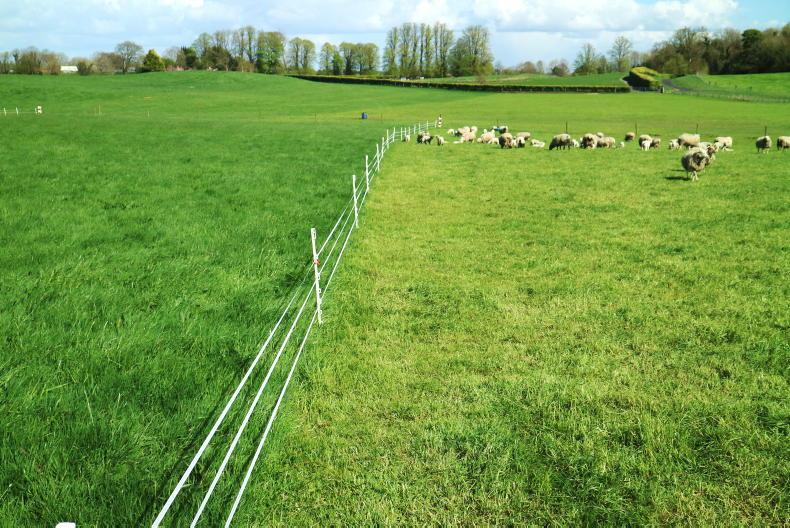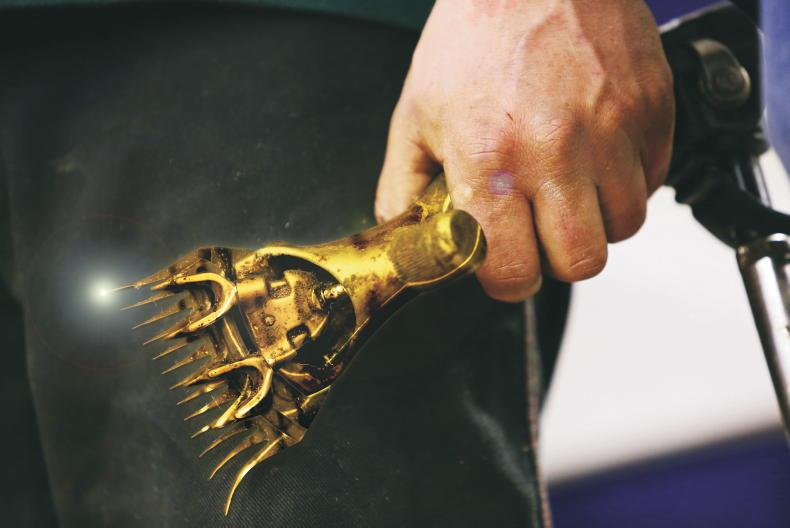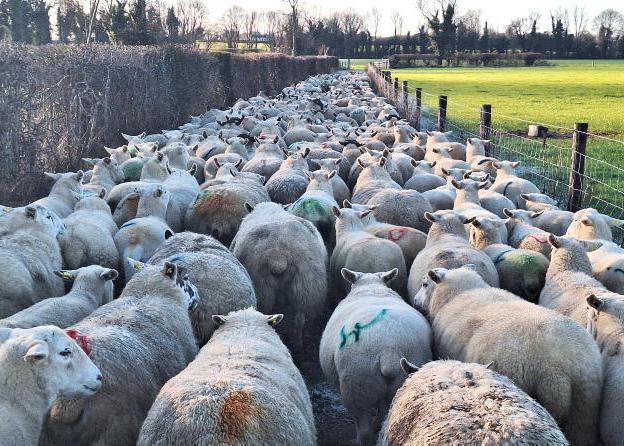Grass: The increase in temperatures at the start of the week was a welcome relief for farmers tight on grass.
While temperatures have eased back as the week has progressed, grass growth rates have picked up and should hopefully help to bring farmers back on track.
It is important that management practices to build the average farm cover remain in place for highly stocked farms that are still struggling to build supplies.
The contrast to this is farms that are lowly stocked or have a high percentage of reseeded ground and have seen grass growth rates increase and supplies quickly build. The last few weeks have provided a great opportunity to get swards grazed tight and build a platform to maintain good quality grass ahead of ewes and lambs.
At this stage, grazing groups should be in place to allow swards to be grazed out quickly, or large areas should now be split to maintain high levels of utilisation. The secret where using temporary electric fencing is to ensure there is good current in the fence at the outset and if required, use additional strands of wire until ewes and lambs become accustomed to it.
Injection sites: An increasing number of mid-season born lambs will be reaching an age where passive immunity derived via ewe colostrum is waning fast, as lambs approach eight to nine weeks of age. There are a number of factors farmers need to be mindful of when injecting young lambs.
The recommended injection site for administering a vaccine, irrespective of the product used, is the animal’s upper neck region to one side.
This eliminates the risk of damaging higher value areas of the carcase, such as the rump, if an infection or abscess were to occur.
Young lambs should be restrained well to reduce the risk of injury, but also to cut down on the important risk of self-injecting. This can have very serious consequences where handling oil-based products and any injection site should be washed thoroughly immediately, along with seeking prompt medical attention if required.
Handling of vaccines also has a major role in ensuring their efficacy. Manufacturers advise that vaccines should be stored between 2°C and 8°C and ideally should be stored in a cooler bag that maintains this temperature range during transport or pre-usage. Where storing in a fridge, be careful, as it is common for some areas of the fridge, such as the back for example, to freeze at certain settings, which will also harm vaccine efficacy.
Once open, most vaccines should be used within a timeframe of eight hours, with some slightly longer and within 10 hours.
Shearing restrictions: The few fine days over the weekend and start of the week have triggered producers specialising in trading replacement ewe hoggets to consider putting plans in place for shearing.
This has raised some questions regarding if there is any COVID-19 restrictions in place preventing shearing contractors from travelling outside their county or beyond the 20km zone, where located on a county border.
Sheep shearing was classified as an essential service during lockdown restrictions in 2020 and there has been no change reported to this status.
It is important that COVID-19 guidelines continue to be followed to protect everyone involved. Recommendations for farmers and shearers established in 2020 can be viewed on www.farmersjournal.ie.
Grass: The increase in temperatures at the start of the week was a welcome relief for farmers tight on grass.
While temperatures have eased back as the week has progressed, grass growth rates have picked up and should hopefully help to bring farmers back on track.
It is important that management practices to build the average farm cover remain in place for highly stocked farms that are still struggling to build supplies.
The contrast to this is farms that are lowly stocked or have a high percentage of reseeded ground and have seen grass growth rates increase and supplies quickly build. The last few weeks have provided a great opportunity to get swards grazed tight and build a platform to maintain good quality grass ahead of ewes and lambs.
At this stage, grazing groups should be in place to allow swards to be grazed out quickly, or large areas should now be split to maintain high levels of utilisation. The secret where using temporary electric fencing is to ensure there is good current in the fence at the outset and if required, use additional strands of wire until ewes and lambs become accustomed to it.
Injection sites: An increasing number of mid-season born lambs will be reaching an age where passive immunity derived via ewe colostrum is waning fast, as lambs approach eight to nine weeks of age. There are a number of factors farmers need to be mindful of when injecting young lambs.
The recommended injection site for administering a vaccine, irrespective of the product used, is the animal’s upper neck region to one side.
This eliminates the risk of damaging higher value areas of the carcase, such as the rump, if an infection or abscess were to occur.
Young lambs should be restrained well to reduce the risk of injury, but also to cut down on the important risk of self-injecting. This can have very serious consequences where handling oil-based products and any injection site should be washed thoroughly immediately, along with seeking prompt medical attention if required.
Handling of vaccines also has a major role in ensuring their efficacy. Manufacturers advise that vaccines should be stored between 2°C and 8°C and ideally should be stored in a cooler bag that maintains this temperature range during transport or pre-usage. Where storing in a fridge, be careful, as it is common for some areas of the fridge, such as the back for example, to freeze at certain settings, which will also harm vaccine efficacy.
Once open, most vaccines should be used within a timeframe of eight hours, with some slightly longer and within 10 hours.
Shearing restrictions: The few fine days over the weekend and start of the week have triggered producers specialising in trading replacement ewe hoggets to consider putting plans in place for shearing.
This has raised some questions regarding if there is any COVID-19 restrictions in place preventing shearing contractors from travelling outside their county or beyond the 20km zone, where located on a county border.
Sheep shearing was classified as an essential service during lockdown restrictions in 2020 and there has been no change reported to this status.
It is important that COVID-19 guidelines continue to be followed to protect everyone involved. Recommendations for farmers and shearers established in 2020 can be viewed on www.farmersjournal.ie.










SHARING OPTIONS